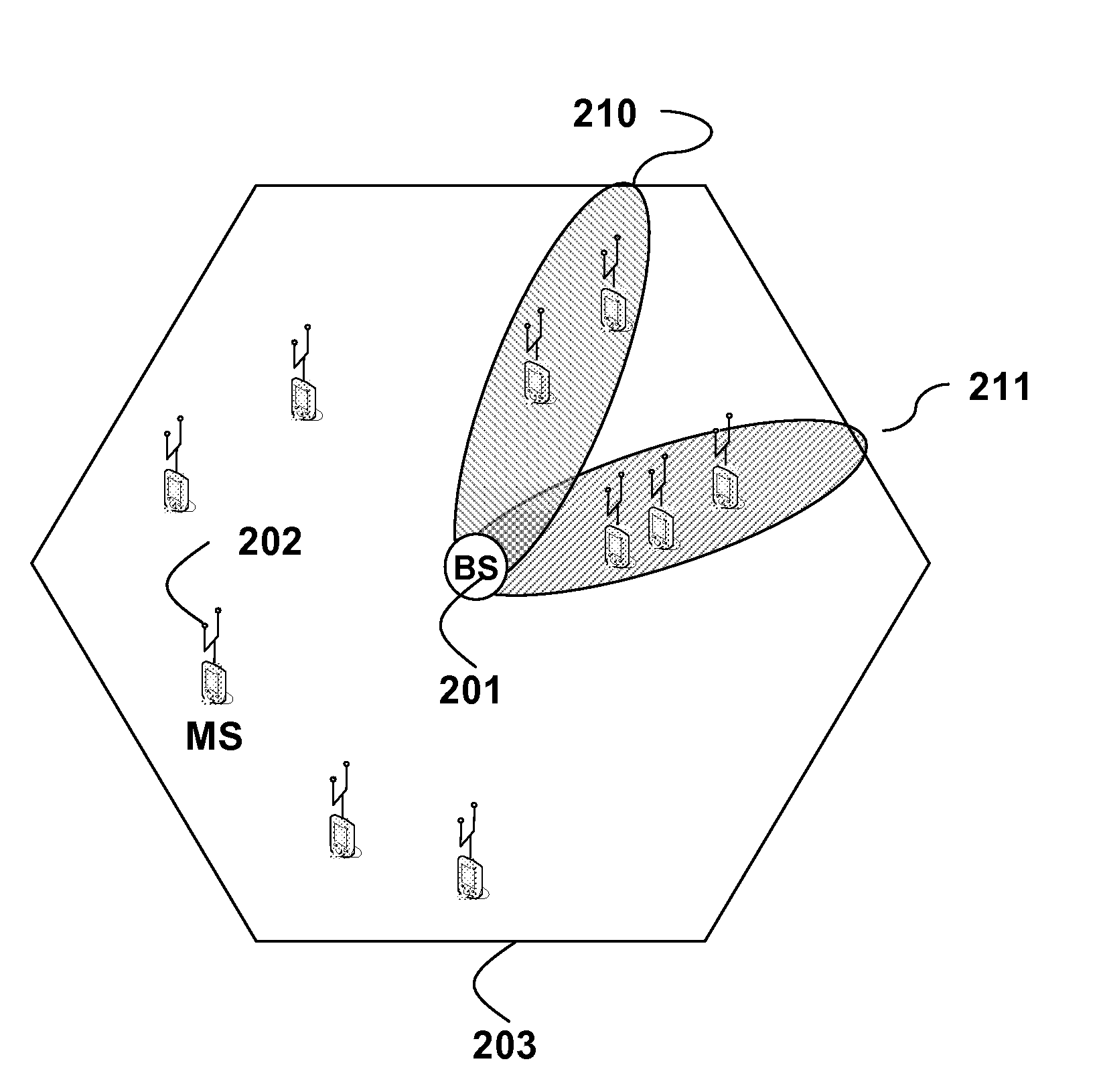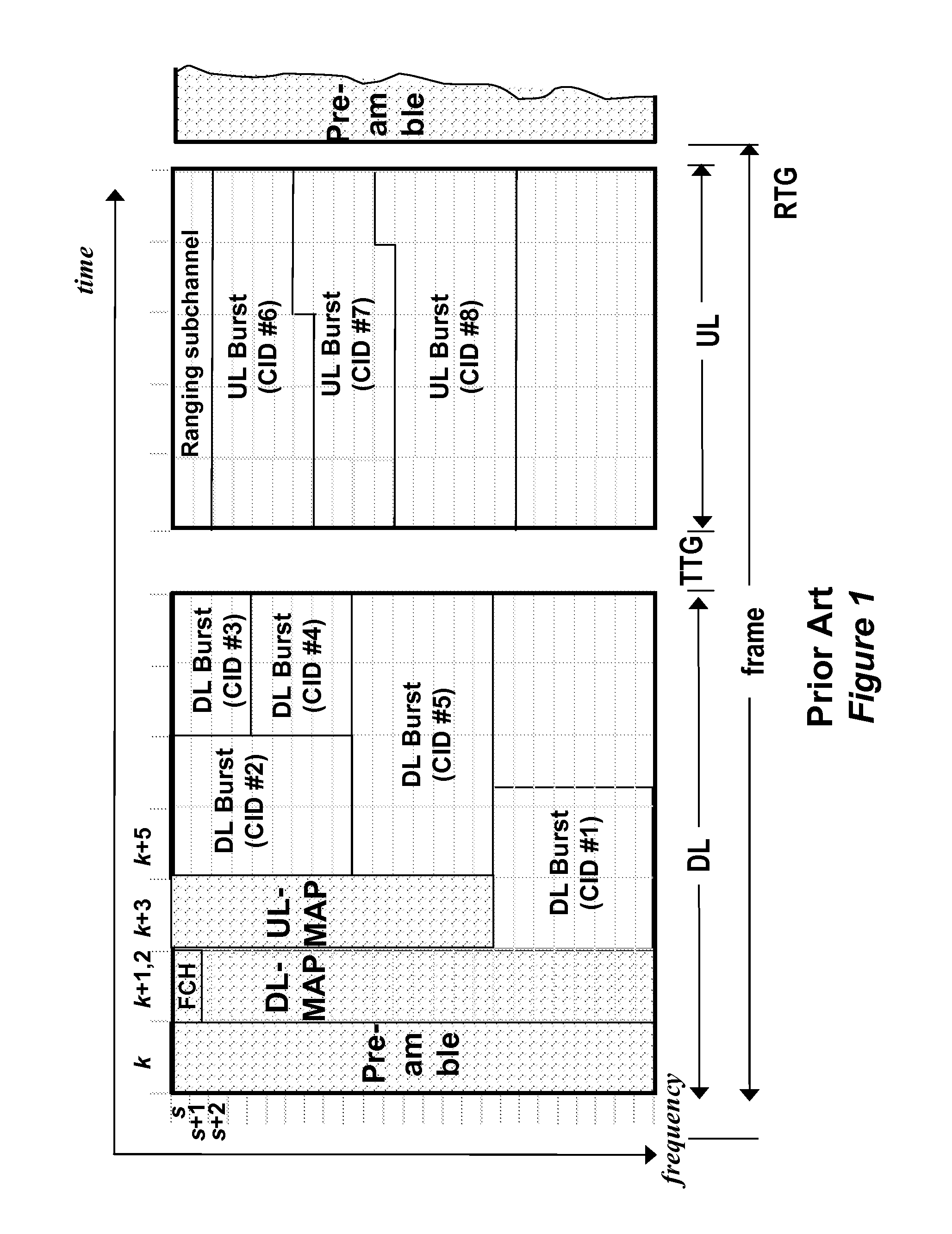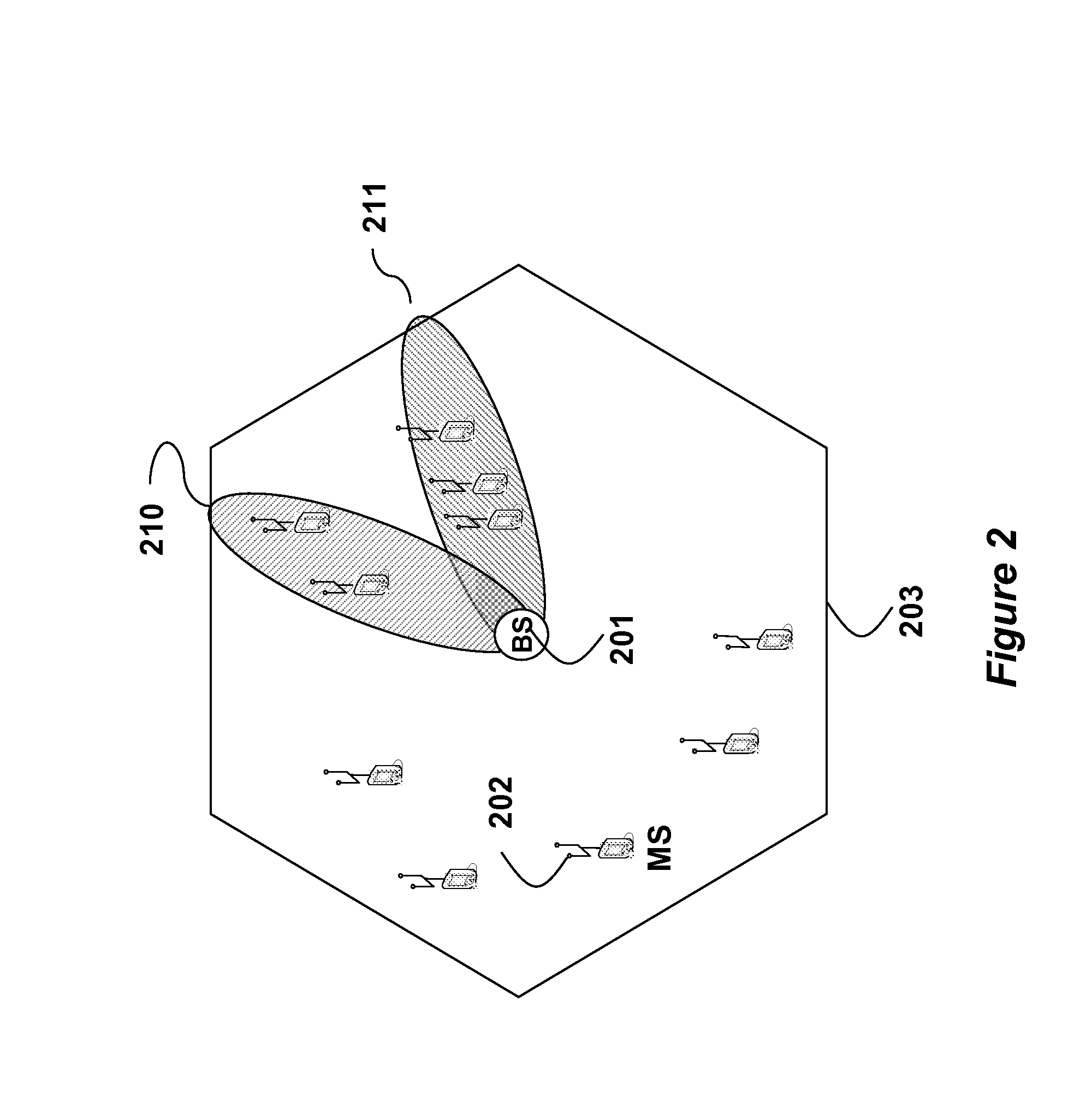Analogue Beamforming
a technology of analog beams and beam switching, applied in the field of analog beam forming and beam switching in networks, can solve the problems of not having a zone to support abf, and the optimal use of analog beams by multiple antenna elements
- Summary
- Abstract
- Description
- Claims
- Application Information
AI Technical Summary
Problems solved by technology
Method used
Image
Examples
Embodiment Construction
[0023]FIG. 2 shows a wireless network with a base station (BS) 201, and a set of mobile stations (MS) 202 according to embodiments of our invention. The BS can form beams 210-211 within the cell 203 using a linear antenna array concatenated with a Butler matrix, see U.S. Patent Application 20060104197, “Method and system for economical beam forming in a radio communication system.”
[0024]Analog beam forming (ABF) requires that we define new zones in the superframe structure for the down link (DL) and the up link (UL). A zone is a time division duplexing technique that allows multiple transmission formats in the same DL and UL.
[0025]By partitioning the DL into multiple zones, the MS in different zones can be handled sequentially. Each ABF zone corresponds to a transmission interval in the DL, where a particular beam is active at the BS. Thus, the MS within the geographic coverage area of the active beam are grouped into an active set, and served during the corresponding zones.
[0026]Th...
PUM
 Login to View More
Login to View More Abstract
Description
Claims
Application Information
 Login to View More
Login to View More - R&D
- Intellectual Property
- Life Sciences
- Materials
- Tech Scout
- Unparalleled Data Quality
- Higher Quality Content
- 60% Fewer Hallucinations
Browse by: Latest US Patents, China's latest patents, Technical Efficacy Thesaurus, Application Domain, Technology Topic, Popular Technical Reports.
© 2025 PatSnap. All rights reserved.Legal|Privacy policy|Modern Slavery Act Transparency Statement|Sitemap|About US| Contact US: help@patsnap.com



